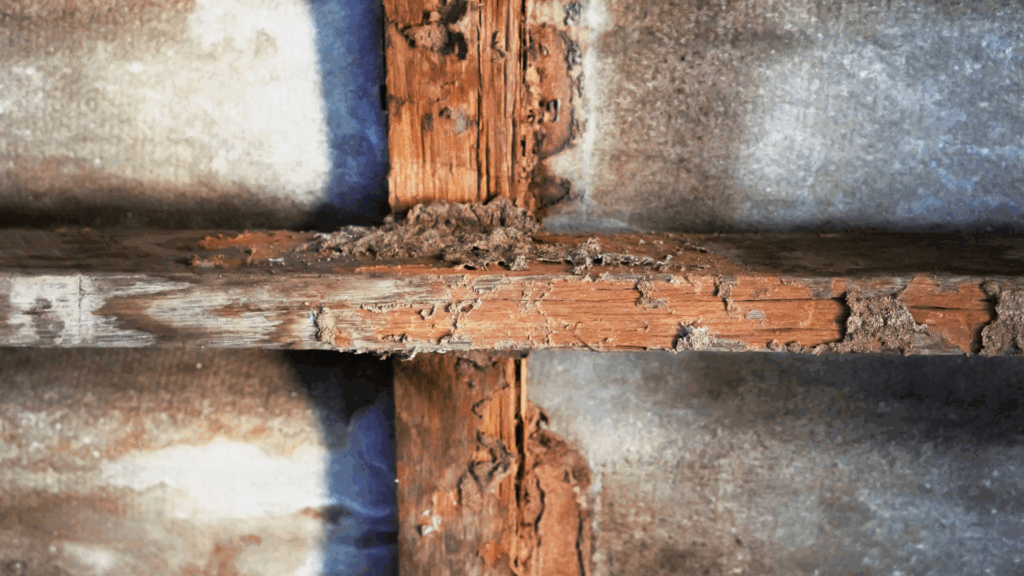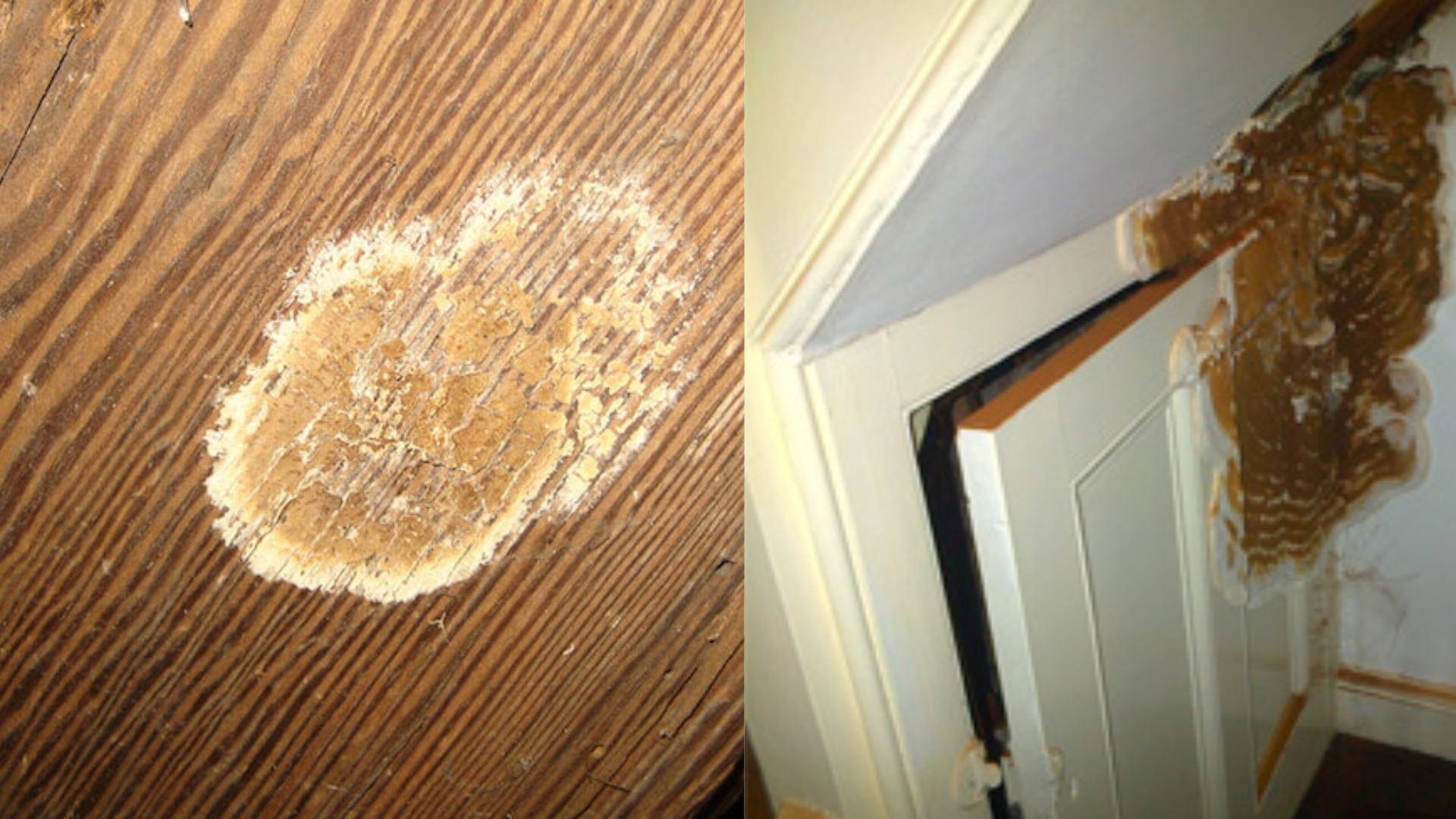When it comes to home maintenance, dry rot is one of the most destructive and subtle problems homeowners can face.
This condition can slowly deteriorate wooden structures, leading to costly repairs if not identified early.
By understanding the early signs of dry rot, you can take proactive steps to protect your home and avoid extensive damage.
In this blog, I’ll guide you through the key warning signs of dry rot, explain what causes it, and offer tips on how to prevent it. Recognizing dry rot early can help save you time, money, and hassle.
With the right knowledge and quick action, you can keep your property safe from the serious consequences of this silent threat.
What is Dry Rot?

Dry rot, caused by the fungus Serpula lacrymans, affects wood by feeding on its cellulose, weakening its structure over time.
Unlike other forms of rot, it can occur in relatively dry areas, making it harder to detect.
The fungus thrives in damp, poorly ventilated areas like basements, attics, or behind walls.
It spreads quickly through spores, causing the wood to become brittle, cracked, and crumbly.
Early detection and treatment are crucial to prevent extensive damage and costly repairs.
Dry rot can silently destroy large sections of a home’s structure before it’s noticed, making prompt action essential.
Early Signs of Dry Rot
Identifying early signs of dry rot can help prevent significant damage to your home. These are some key indicators to watch out for.
1. Soft, Spongy Wood
Soft or spongy wood is often the first sign of dry rot. If the wood feels squishy or can be easily pressed with your fingers, it indicates that the fungus is breaking down the wood.
This weakness makes the wood lose its original strength and integrity, especially in structural components like beams and floors.
Early detection of soft wood is crucial to prevent further spread.
2. Color Change in Wood
Dry rot often causes a noticeable color change in the affected wood. The wood may develop a dull, brownish hue or turn reddish-brown as the fungus grows.
As the rot advances, the wood’s texture may also degrade, appearing darker and powdery in severe cases.
These discolorations signal the breakdown of the wood, and if not treated, can lead to further structural damage.
3. Musty, Damp Smell
A musty, damp smell is a common indicator of dry rot. This odor is produced by the decaying wood and fungal spores.
You may notice this smell in areas prone to moisture, such as basements or attics.
The intensity of the smell may increase over time as the fungus continues to spread.
It’s important to take immediate action if you detect this smell, as it’s a strong sign that dry rot may be present.
4. Cracks in Wood
As dry rot progresses, the wood becomes more brittle and begins to crack. These cracks can appear as small fractures or large gaps that compromise the wood’s integrity.
Cracking occurs because the fungus breaks down the cellulose in the wood, weakening its structure.
If left untreated, these cracks will spread, leading to more extensive damage.
Immediate repairs are necessary to prevent further destruction and restore the strength of the wood.
5. Shrinking or Warping Wood
Dry rot can cause wood to shrink or warp, which affects the stability of your home’s structure.
If you notice that wooden floors, beams, or trim are no longer level or appear to be shrinking, it could be due to dry rot.
The fungus feeds on the wood fibers, causing the wood to lose its volume and structural integrity.
This warping and shrinking can lead to more severe issues, so prompt attention is necessary to prevent further damage.
How Dry Rot Spreads?
Dry rot is a fungal decay that thrives in moist environments, often caused by high humidity or water exposure.
Leaky roofs, windows, plumbing issues, or poor ventilation trap moisture, creating ideal conditions for the fungus.
Basements, attics, and crawl spaces are especially vulnerable due to their dampness and limited airflow. Without proper ventilation, moisture accumulates, promoting dry rot growth.
Regular inspections and improving ventilation in these areas are crucial to prevent dry rot and protect your home from costly damage.
Effects of Dry Rot
Dry rot can cause severe structural damage, weaken wooden structures, and lead to expensive repairs if not addressed promptly.
- Structural Damage: Dry rot weakens wooden beams, floors, and other structural elements, which can compromise the integrity of your home.
- Reduced Property Value: Homes with dry rot may lose value due to the potential for costly repairs and the risk of further damage.
- Health Hazards: The fungal spores from dry rot can cause respiratory issues, especially in individuals sensitive to mold or mildew.
- Aesthetic Damage: Dry rot can leave visible stains, discoloration, and deformities in wooden surfaces, affecting the appearance of your home.
- Increased Repair Costs: If left untreated, dry rot can spread rapidly, leading to higher repair costs as more extensive damage occurs over time.
- Compromised Safety: The weakened wood caused by dry rot can lead to potential safety hazards, including sagging floors, unstable roofs, and structural collapse in extreme cases.
- Damage to Insulation: As dry rot spreads, it can also damage the insulation in your home, reducing energy efficiency and leading to higher utility bills.
How to Prevent Dry Rot?
Taking proactive steps like regular inspections, addressing leaks quickly, improving ventilation, maintaining proper drainage, and using moisture-resistant materials can help prevent dry rot from taking hold in your home.
- Regular Inspections: Routinely check wooden areas like beams and floors for early signs of dry rot to address issues before they worsen.
- Address Leaks Immediately: Fix leaks in your roof, windows, or plumbing as soon as possible to prevent moisture from fostering dry rot.
- Improve Ventilation: Enhance airflow in damp areas like attics and basements to reduce humidity and prevent dry rot from thriving.
- Maintain Proper Drainage: Ensure good drainage around your home’s foundation to prevent standing water that can lead to dry rot.
- Use Moisture-Resistant Materials: Use treated or composite materials in moisture-prone areas to reduce the risk of dry rot.
What Is the Treatment for Dry Rot?
To treat dry rot, start by eliminating the moisture source, such as fixing leaks and improving ventilation in damp areas.
Once the moisture issue is resolved, remove or replace the affected wood. If the damage is minor, a wood hardener or fungicide can prevent further decay.
Clean and treat the area with fungicide to kill remaining spores. For extensive damage, replacing the wood is necessary to maintain structural integrity.
Professional help may be needed to ensure proper treatment and prevent recurrence.
Dry Rot Treatment Costs
The cost of treating dry rot depends on the extent of the damage and the size of the affected area. Here’s a breakdown:
Minor Dry Rot:
- Cost: $500 – $1,500
- Includes: Removing damaged wood, applying fungicides, and replacing affected sections.
Extensive Damage:
- Cost: $2,000 – $5,000
- Includes: Repairing structural components like beams or joists affected by dry rot.
Severe Damage (Multiple Areas):
- Cost: $10,000+
- Includes: Widespread damage affecting multiple areas of the home.
Additional Costs:
- Fixing the underlying moisture issue (e.g., leaks or ventilation) will add extra expenses.
Conclusion
Dealing with dry rot early on is crucial to prevent significant damage to your home.
I’ve found that regular inspections, addressing leaks promptly, and ensuring proper ventilation can go a long way in preventing this issue.
Once dry rot is detected, immediate treatment is essential to avoid costly repairs.
The treatment process may involve removing damaged wood, applying fungicides, and replacing sections, but taking swift action can save you from more extensive work down the line.
If you notice signs of dry rot in your home, don’t wait. Contact a professional to assess the situation and begin treatment.
Keeping your home safe and structurally sound is worth the investment.
Reach out today to get a professional evaluation and protect your property from further damage.
Frequently Asked Questions
Can dry rot affect structural integrity?
Yes, dry rot weakens the wood, making it less stable and increasing the risk of structural failure if left untreated.
How long does it take to repair dry rot?
The repair time varies depending on the extent of the damage. It could take anywhere from a few days to a few weeks, depending on the area affected.
Can I prevent dry rot with a home warranty?
Some home warranties cover the costs of repairing dry rot, but it’s essential to check the specifics of your policy.

